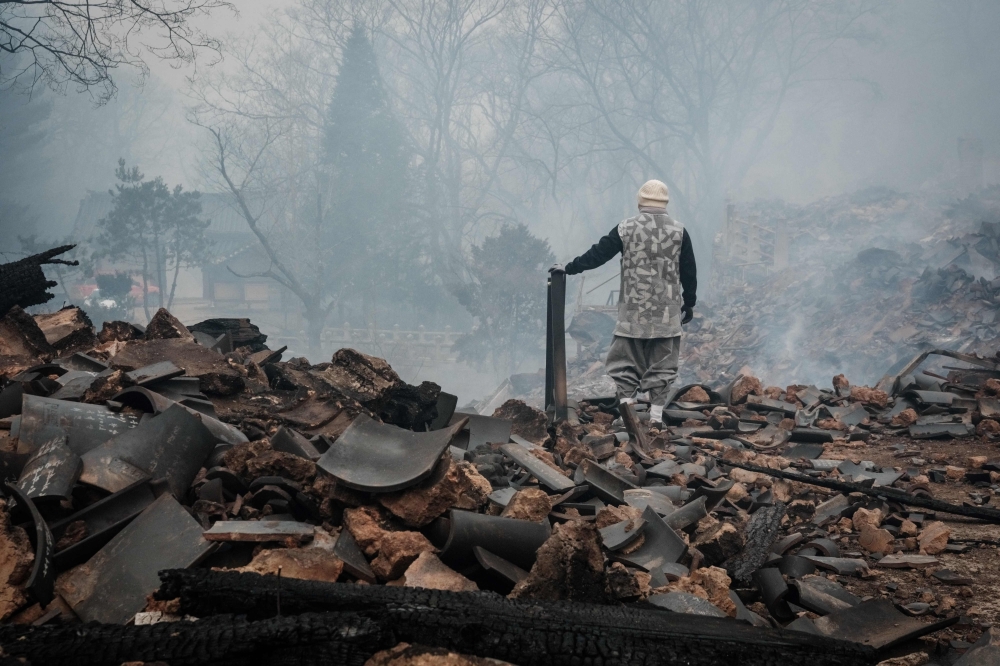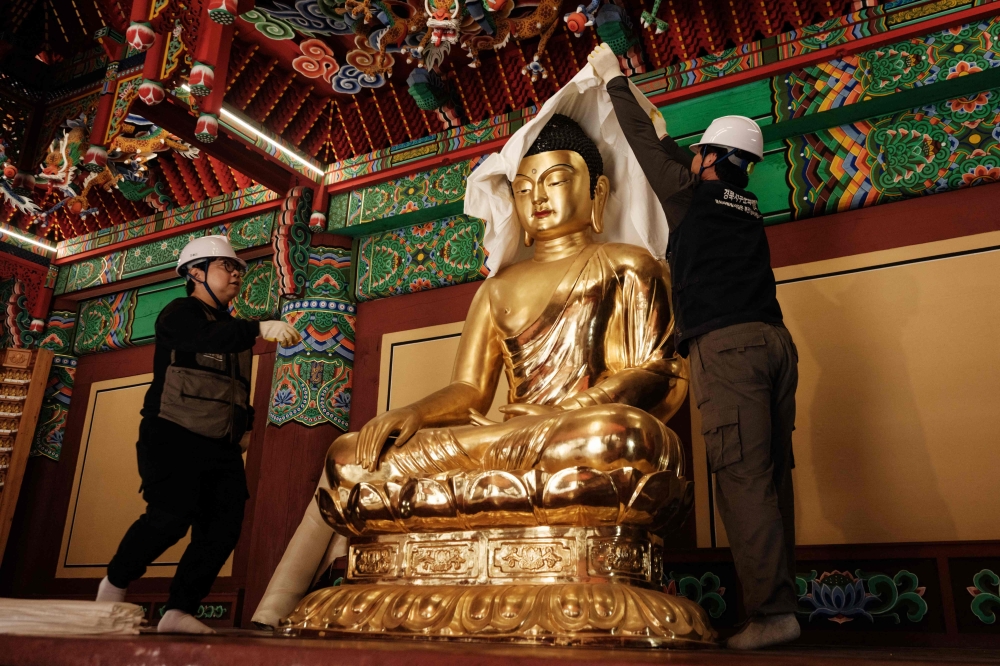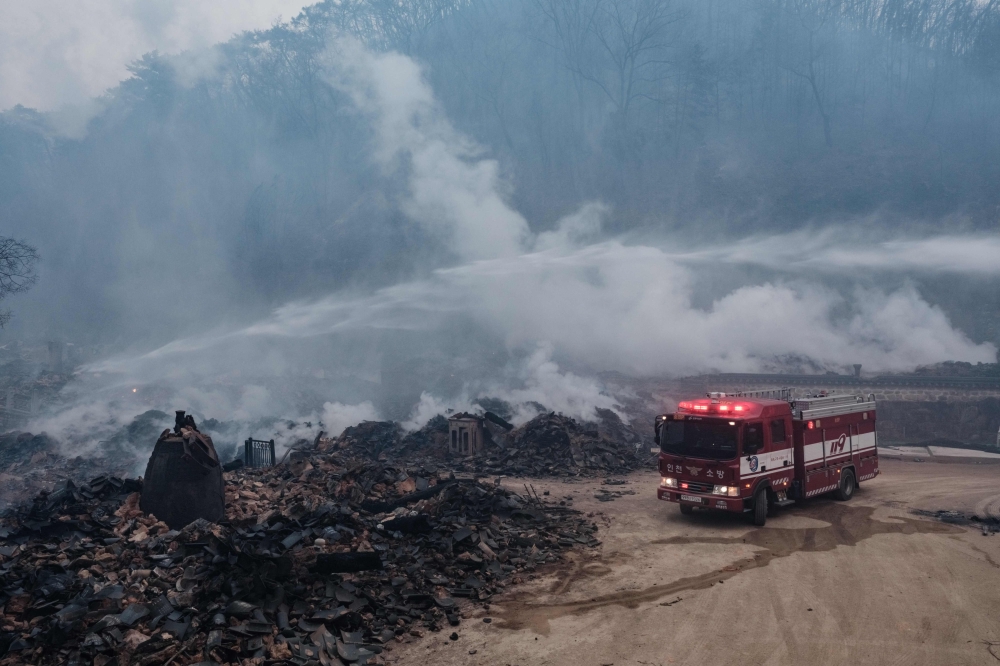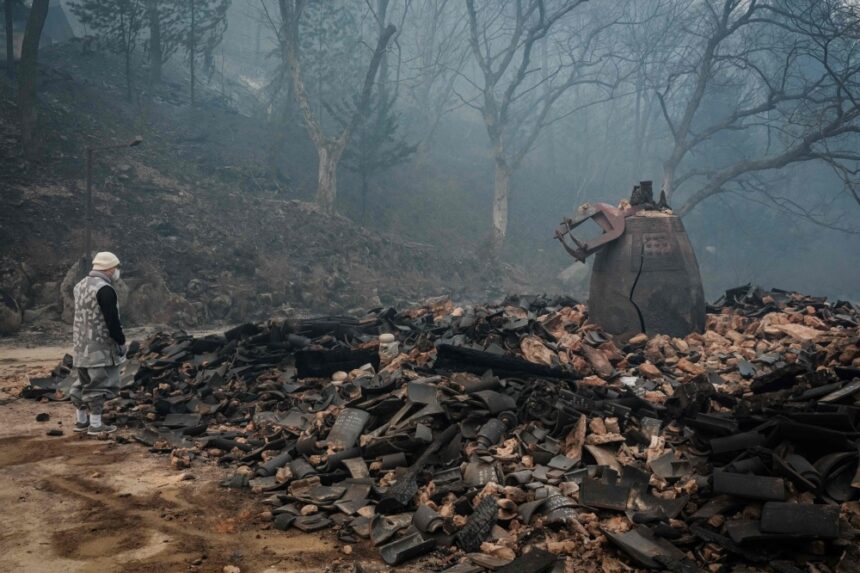ANDONG, March 27 — Charred, black ruins at South Korea’s Gounsa temple stood today in stark contrast to the kaleidoscope of colours that are a trademark of the country’s historic palaces and Buddhist temples.
Many of the buildings at the temple complex, first built by monks in the year 681, burned to the ground this week as South Korea’s largest wildfire ever swept through forests and towns, killing at least 26 people and destroying or damaging priceless cultural sites.
“There was a wind stronger than a typhoon, and flames whipped through the air like a tornado, burning the whole area in an instant,” Gounsa temple chief Deungwoon told Reuters.
“The buildings and remains of what Buddhist monks have left over 1,300 years are now all gone.”
Embers remain among the debris after most of the buildings were burned to the ground in a wildfire at Gounsa Temple in Uiseong March 26, 2025. — AFP pic
A massive, ornate bronze bell sat in the ruins of its tower, cracked from top to bottom. Two out of the three national treasures at the site burned, while a handful of other structures escaped the blaze.
Gounsa was one of at least 18 designated heritage sites or objects, including two national treasures, that had been destroyed or damaged as of today, according to the Korea Heritage Service.
“About 750 people were deployed to national heritage sites as of Wednesday, and preliminary checks and emergency measures are being taken,” the service said in a statement.

A monk stand on debris after most of the buildings were burned to the ground in a wildfire at Gounsa Temple in Uiseong March 26, 2025. — AFP pic
The measures included preventive spraying, deploying fire-retardant cloth, cutting fire prevention lines, and removing historic items, including Buddha statues.
At least 1,566 relics were moved from major temples, including Gounsa, and old family homes in the area.
At the picturesque Hahoe Folk Village, a Unesco World Heritage Site, authorities deployed retardant and other measures in a desperate attempt to save its thatch-roof buildings nestled on a bend in the Nakdong River.

Members of the Gyeongbuk Seobu Cultural Heritage Care Center wrap a Buddha statue with cotton cloth and a fire-retardant blanket after evacuating all other items the night before, during preparations for the possibility of a wildfire advancing towards Gounsa Temple in Uiseong March 25, 2025. — AFP pic
While residents were urged to evacuate, as of today the village had survived.
Throughout Korea’s tumultuous history, fire has posed one of the greatest threats to its traditional wooden structures, and many of the temple halls had bronze bowls of water placed outside to warn of the danger of flames.
Parts of Gounsa itself have burned before, most recently in 1975, before a major restoration in 1992. But the scale of the latest destruction left residents in disbelief.

A water cannon extinguishes the remaining flames after most of the buildings burned to the ground in a wildfire at Gounsa Temple in Uiseong March 26, 2025. — AFP pic
“The sadness is indescribable,” said 70-year-old Kim Young-hoo. “As a follower who cherishes this place, it pains my heart to see it destroyed so horribly.”
South Korea’s main opposition leader Lee Jae-myung visited the still-smoking ruins today and called for further protection of other threatened sites.
“I heard that traditional temples in nearby areas are also in a dangerous state,” he said. — AFP


